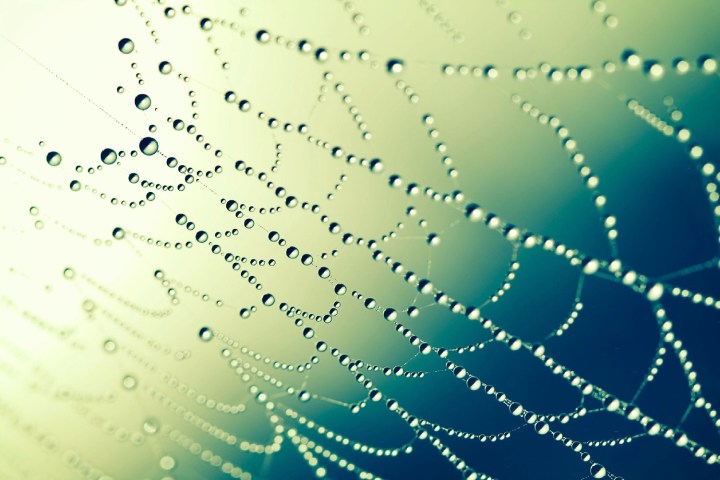
“[Making current] synthetic fibers requires a tremendous amount of energy – up to 1,500 C — and large use of solvents, that are difficult, toxic, and unpleasant to handle and dispose,” Dr. Darshil Shah, co-author of the paper, told Digital Trends. “On the other hands, we see that spiders have evolved over hundreds of millions of years to produce silk fibers with superb properties, on demand, from a gel with water as a solvent, at room temperature and pressure.”
That’s what the Cambridge scientists have developed with their method of spinning fibers at room temperature from a hydrogel that’s 98 percent water. (The remaining 2 percent of the hydrogel are made up of solid substances in the form of polymer-grafted modified silica and modified cellulose.) The chemical interactions between these different components allow for the long, extremely thin threads to be pulled from the hydrogel. The resulting threads are incredibly thin, measuring just a few millionths of a meter in diameter.
“What is most interesting is that this is the first ever, to our knowledge, ‘supramolecular fiber,’” Shah continued. “What we mean by ‘supramolecular’ is that there are no covalent bonds between the modified silica and cellulose polymers, but rather the interactions are all non-covalent. This dynamic cross-linking is important in giving the hydrogel the ability to stretch so much, and to form fibers in the first place. In addition, there is so much scope to modify the chemistry, by changing the cellulose polymer we have used, to make a whole family of fibers with interesting properties.”
This certainly isn’t the first example of artificial spider silk we’ve come across, but it does possess some fairly unique qualities. One of these is that it exhibits an impressive damping performance, referring to its ability to dissipate close to 70 percent of the energy in impacts. This is a property that real spiders need to have in their silk in order to absorb the impact of insects hitting their webs.
According to Shah, there are a number of possible applications for the team’s artificial webbing, ranging from textiles to biomedical applications. In particular, the ability to absorb impacts could make it a valuable material for future helmets for cyclists, football players, skateboarders, and assorted other extreme contact sports. And, hey, who wouldn’t want a bulletproof vest made out of fake spider webbing?
Now we just need someone to come along and combine fake spider silk with one of the cool spider robots we’ve been seeing popping up in research labs around the world. Or, at the very least, build us some Spider-Man-style web shooters!


